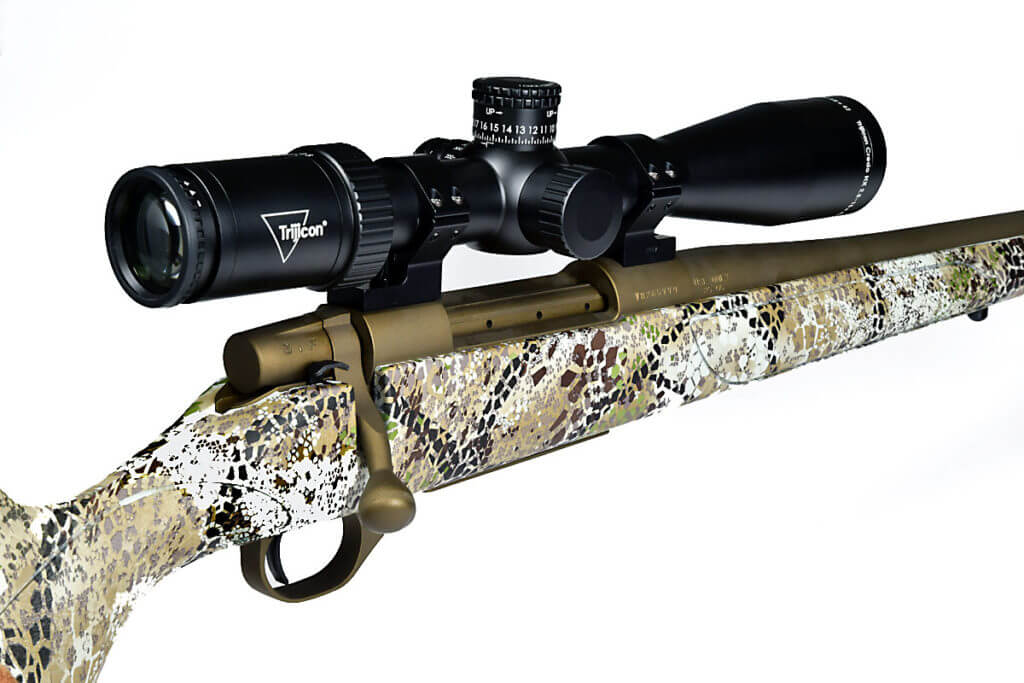
“To approach the badlands,” wrote author Robert Kroetsch, “is to find a gap in the known and expected world.” That statement could easily apply to one of the newest Weatherby Vanguard rifles. It is named, appropriately enough, the Vanguard Badlands.
Vanguard rifles are certainly well known. They have been serving hunters handily for half a century. Originally introduced as a more affordable alternative to the company’s more expensive Mark V rifle and chambered only for standard cartridges, the rifle has evolved over time and is today offered in no fewer than 24 variations chambered for both standard and select Weatherby magnum cartridges. The rifles are also well-known to me; I own three, including one chambered in 257 Wby. Mag. that has probably accounted for more game than any other rifle in my collection.
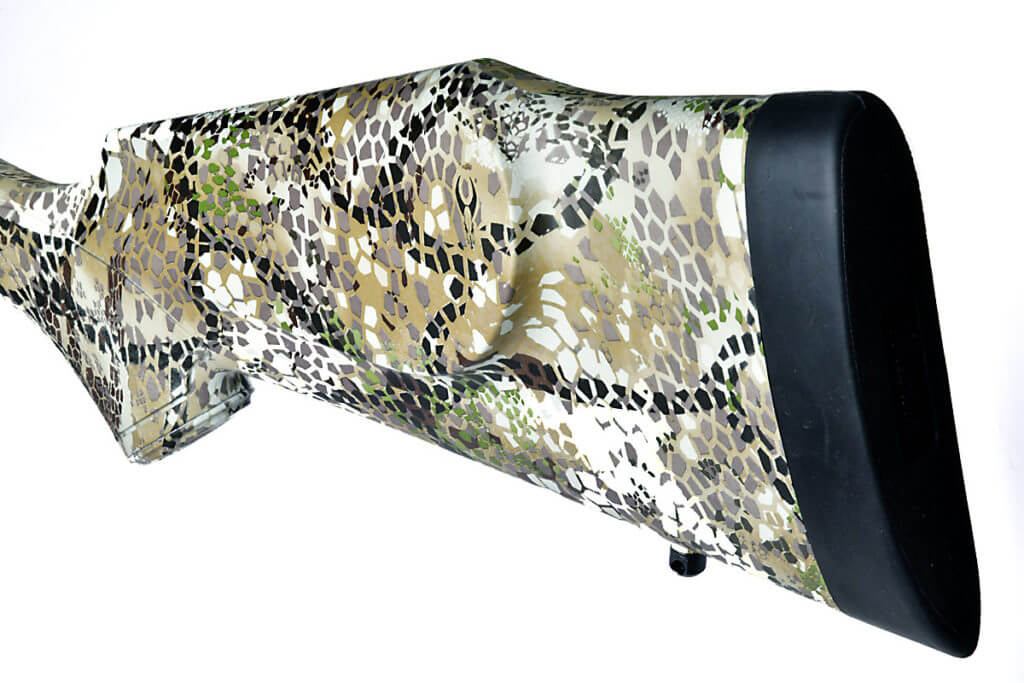
What I wasn’t expecting with the Badlands rifle, until I held it in my hands, was to discover how visually stunning it is. Weatherby says it is the first production rifle to wear a stock with the Badlands Approach camo finish. This unique camo has multi-layered patterns and “adaptive coloration,” in which different colors and layers come into play as lighting conditions change. The result is a distinctive finish that works well in a surprisingly broad range of terrain and conditions, including snow. Combined with classic Weatherby lines and a well-executed burnt bronze Cerakote protective finish on the barrel and all metal work, the rifle is a real head-turner.
But the Badlands isn’t just another pretty face. Beneath the surface, it’s still the same no-nonsense rifle that has been slaying game in the badlands – and most everywhere else – for 50 years. The heart of the rifle is the sturdy, flat-bottomed, machined Vanguard action. It has a fluted, one-piece machined bolt that encloses the cartridge head in Weatherby’s vaunted “three rings of steel.” The bolt has dual opposed locking lugs and three gas escape ports which are visible on the right side of the bolt body when the action is closed. There’s a standard plunger ejector inside the recessed bolt face and a claw-type extractor. The bolt, which has a 90-degree lift, cycles smoothly with no objectionable resistance, and a bolt sleeve fully encloses the rear of the bolt. The bolt release button is protected inside a recessed portion of the stock adjacent to the upper left rear side of the action.
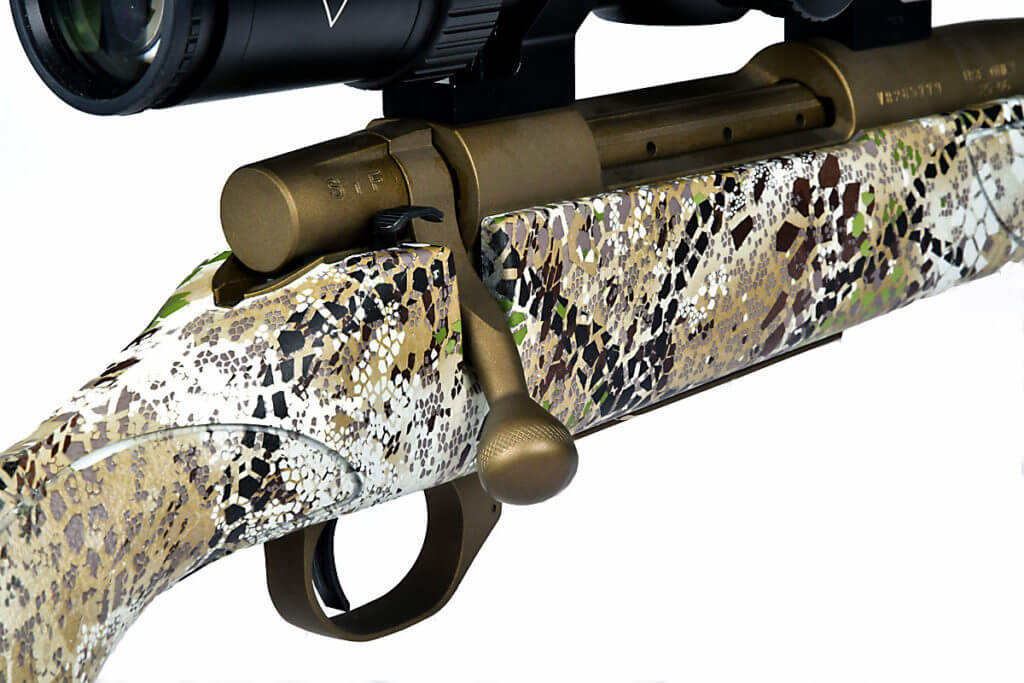
In standard chamberings, the cold hammer forged barrel measures 24 inches and has a somewhat slender No. 2 contour to help keep the rifle’s unloaded weight to about 7 ½ pounds. The barrel length is 26 inches for magnum chamberings.
As you might expect, the rifle’s synthetic stock still retains the signature Weatherby styling, with a raised Monte Carlo comb and slight right side palm swell. A one-inch soft rubber recoil pad does yeoman’s work in moderating recoil. Sling swivel studs are in the usual positions fore and aft. At the bottom of the stock you’ll find the magazine’s hinged floorplate, which is released via a bladed lever inside the leading edge of the trigger guard. It takes a fair amount of pressure to operate the lever, and in all my years of hunting with Vanguard rifles, I’ve never had the floorplate trip open accidentally. Magazine capacity is three rounds for magnum cartridges, and either four or five rounds for rifles in standard chamberings, depending on the cartridge.
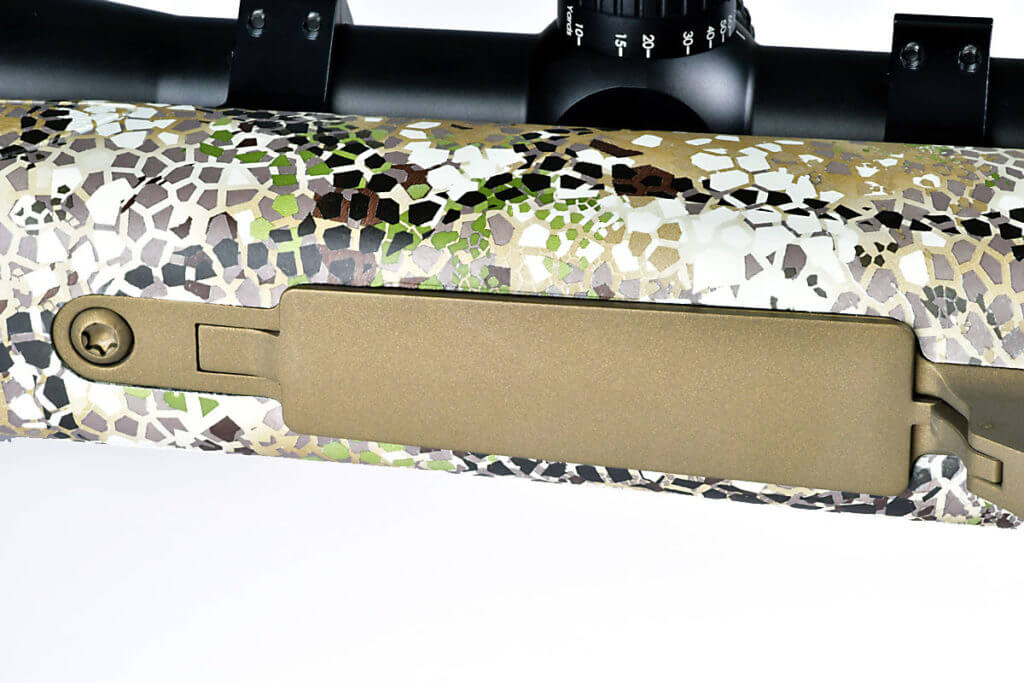
One of the most dramatic improvements with the Vanguard over the years is its trigger. The S2 (Series Two) two-stage trigger on today’s guns is infinitely better than the originals of yesteryear, which had some creep and grittiness to them. The newer trigger is adjustable within a range of 2.5-3.8 lbs. The trigger on my test gun broke consistently at a pull weight of 3 lbs., 3 oz., but it felt lighter than that – probably because the first stage takes up about 8 to 10 ounces of pull weight before the trigger stacks solidly and breaks cleanly. If the rifle were mine, I’d likely adjust the pull weight down just a bit, but I left it as it arrived from the factory for testing. It is, compared to many triggers on factory guns, quite good.
The trigger is mated with a three-position, rocker-style safety. The bolt is locked down with the safety in the rearmost engaged position, but in the middle position, you can safely cycle rounds through the action with the safety still engaged.
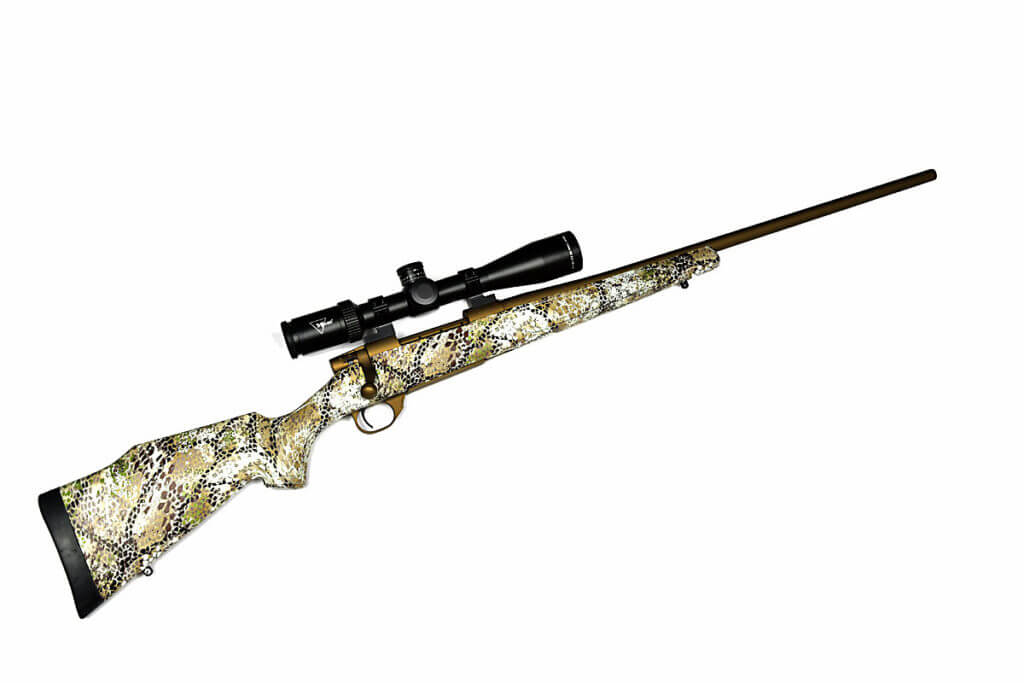
The Badlands rifle is offered in 11 chamberings, including three Weatherby Magnum cartridges (257 Wby. Mag, 300 Wby. Mag. and 6.5-300 Wby. Mag.). Standard chamberings range from 25-06 Rem. to 300 Win. Mag.
The rifle sent to me for testing was chambered in 25-06 Rem., which is an excellent choice for hunting predators as well as mule deer and pronghorn in open country. Some people have no issue taking larger game with the 25-06 when using proper bullets for the job, but the traditional 1-10 twist rate of 25-06 barrels, such as the one with this rifle, limits the weight of bullets that can be effectively stabilized.
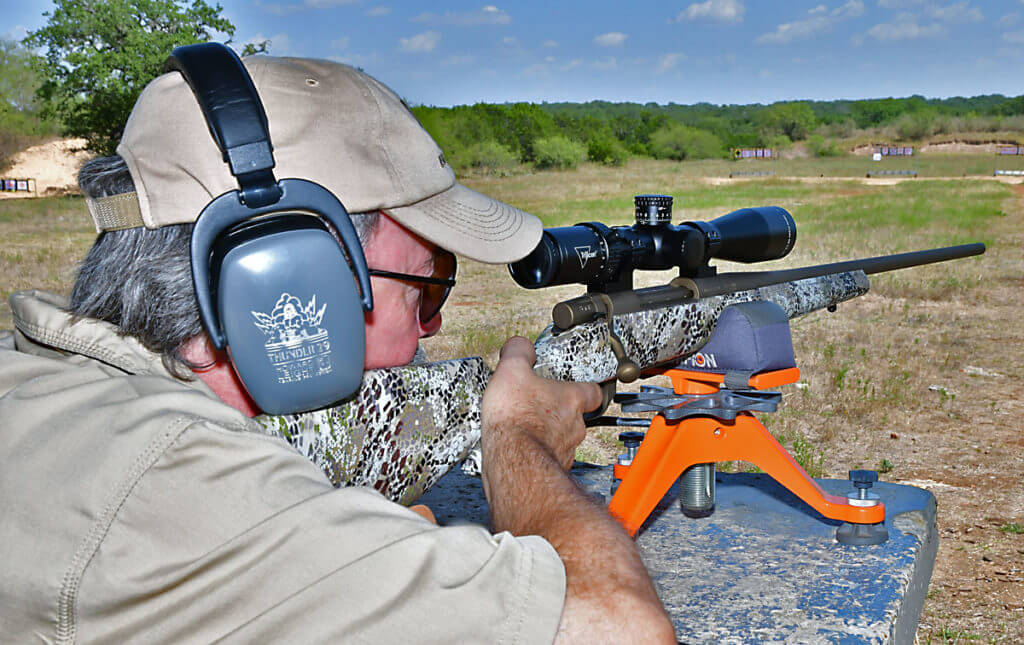
For testing, I mounted a Trijicon Credo HX 2.5-15×42 scope in a set of Talley lightweight rings before taking the rifle out for a prolonged range session. I quickly discovered that average velocities for each of the five 25-06 loads I tested were a bit slower than factory-stated numbers, varying from as little as 31 fps to a more significant 113 fps difference. This may be partly due to some manufacturers testing with 26-inch barrels, and I suspect the barrel on this gun will get a little “faster” after it’s digested a couple of hundred more rounds.
Accuracy testing produced some mildly mixed results, but that was primarily because conditions were less than ideal on the day I tested the gun. For starters, the wind varied from 5-15 mph and often changed direction. Even worse, the Texas summer weather was doing its usual thing and the thermometer was reading north of 100 degrees during most of the prolonged range session. Neither I nor the barrel ever really got a chance to cool down, no matter how long I waited between shots and groups. Weatherby guarantees Vanguard rifles to shoot three-shot groups of .99 inch or less at 100 yards (sub-MOA) from a cold barrel when used with Weatherby factory or premium ammunition, and I knew the rifle would likely be challenged to do so under the scorching conditions at the range.
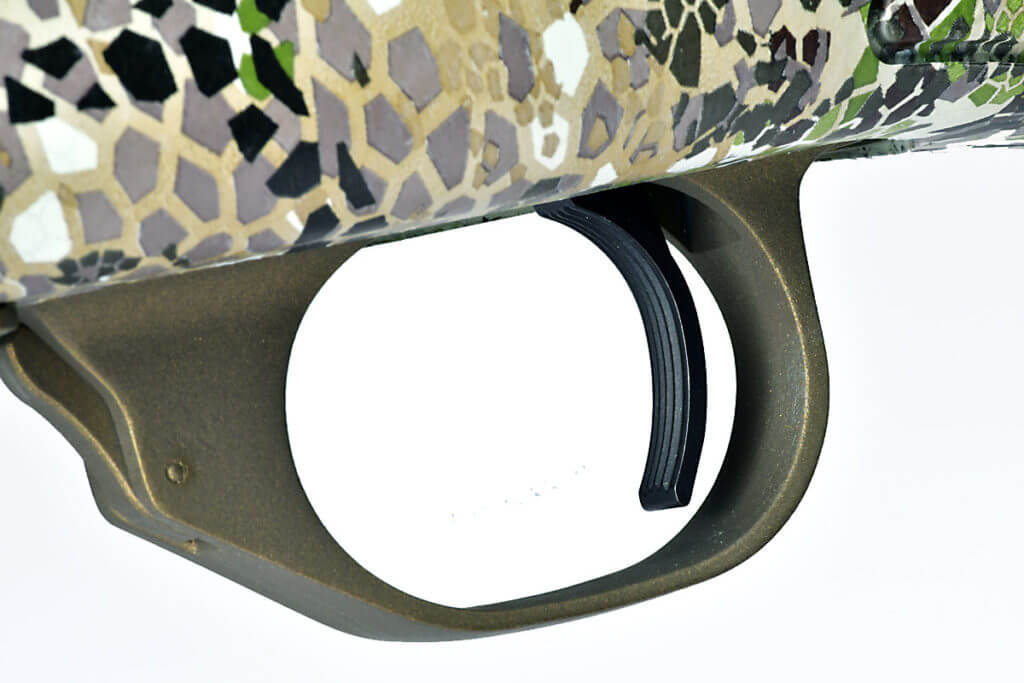
Relatively slender barrels, such as the one on this and many other hunting rifles, tend to heat up faster than heavier barrels. As they do, groups have a tendency to open up, and that proved to be the case with this rifle and the relatively hot-burning 25-06 cartridges. This came as no surprise – mainly because of the hot weather, but also partly because Vanguard rifles employ stocks with pressure points in the forend applying some upward pressure to the barrel. While conventional wisdom holds that barrels must be free-floated to produce optimum repeatable accuracy, it may surprise some people to learn that this has never been universally true. Some sporter-weight barrels often shoot better with their oscillation dampened by some upward pressure on the barrel, but this may also potentially work against the shooter when a barrel gets too hot and expands. That matters in high-volume competitive shooting, but it matters little in hunting when the most important shot is always going to be the first one from a cold barrel — and possibly a second, and rarely a third — if the person behind the trigger knows what they’re doing.
You can remove pressure points from a stock yourself and relieve the barrel channel to free-float the barrel if you wish, but I would advise against it. I did that to a Vanguard rifle a couple of decades ago, and the rifle shot less accurately afterward. That one ended up getting an upgraded stock from Weatherby, complete with pressure points, after which it settled down and shot great again.
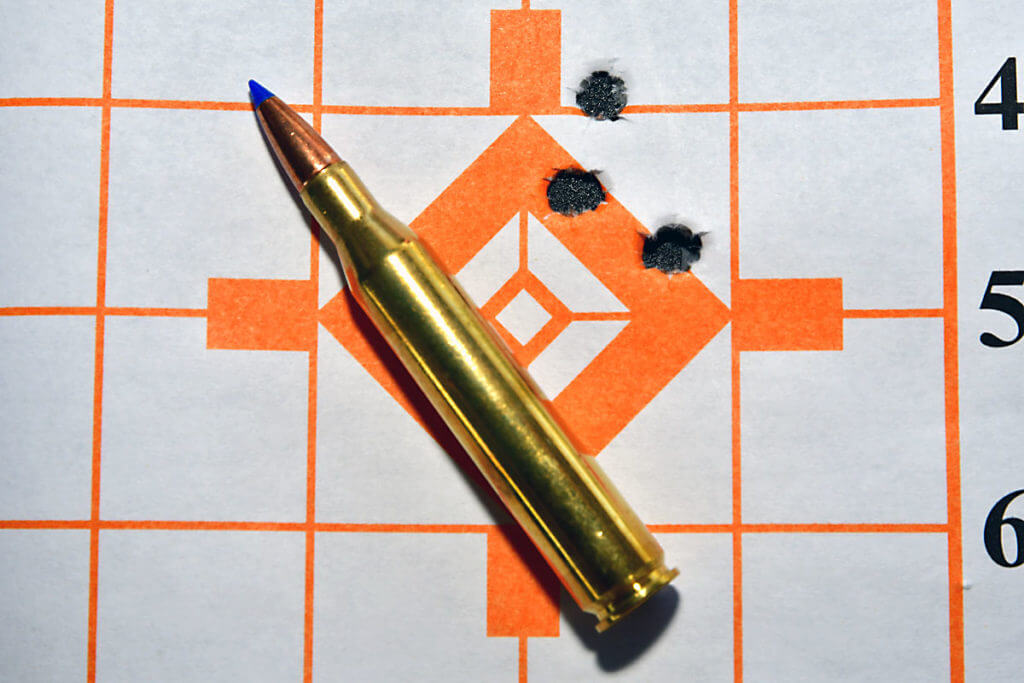
Despite being handicapped by the scorching Texas heat, our test Badlands rifle still shot sub-MOA average groups with two of the five loads tested, showing a real preference for 100-gr. copper bullets over heavier bullets. Some rifles hate copper bullets, and some, such as this rifle, purely love them. The best-performing round was a Barnes VOR-TX load pushing a 100-gr. TTSX boat tail bullet, followed closely by a Federal Premium load using a 100-gr. Barnes TSX bullet. The other three tested loads, including two different loads with 117-gr. bullets, produced average groups closer to 1 ½ inch.
In less torturous conditions, I’m convinced the rifle would do even better, but even under duress, it produced acceptable hunting accuracy with every load tested, making this rifle one I would be happy to carry into the badlands and beyond. Happily, it is also affordable, with an MSRP of $799.
Weatherby Vanguard Badlands Rifle
Caliber: 25-06 Rem., as tested
Action Type: Push-feed bolt action
Barrel: 24 inch, No. 2 contour, 1:10 twist
Finish: Burnt bronze Cerakote
Stock: Synthetic, Badlands Approach Camo
Magazine/capacity: 4+1
Sights: None, drilled and tapped
Barrel Length: 24 inches
Overall Length: 44 ½ inches
Weight: 7 1/2 pounds
MSRP: $799
Weatherby Vanguard Badlands Rifle 25-06 Rem.
| Load | Avg. Velocity (feet per second | Avg. Group 100 yards | Best Group 100 yards |
| Barnes VOR-TX 130 gr. TTSX BT | 3,160 | 0.78 | 0.74 |
| Black Hills Gold 117 gr. SST | 2,987 | 1.65 | 1.60 |
| Federal Meateater Trophy Copper 100 gr. | 3,121 | 1.45 | 1.04 |
| Federal Premium 100 gr. TSX | 3,144 | 0.97 | 0.86 |
| Hornady Superformance 117 gr. SST | 3,079 | 1.59 | 1.42 |
Note: Accuracy measured with three-shot groups in wind 5-15 mph at 100 yards in 100 degree-plus temperatures. Velocity measured as a three-shot average with a Competitive Edge Dynamics M2 chronograph.
CONTACTS:
Barnes Ammunition
Black Hills Ammunition
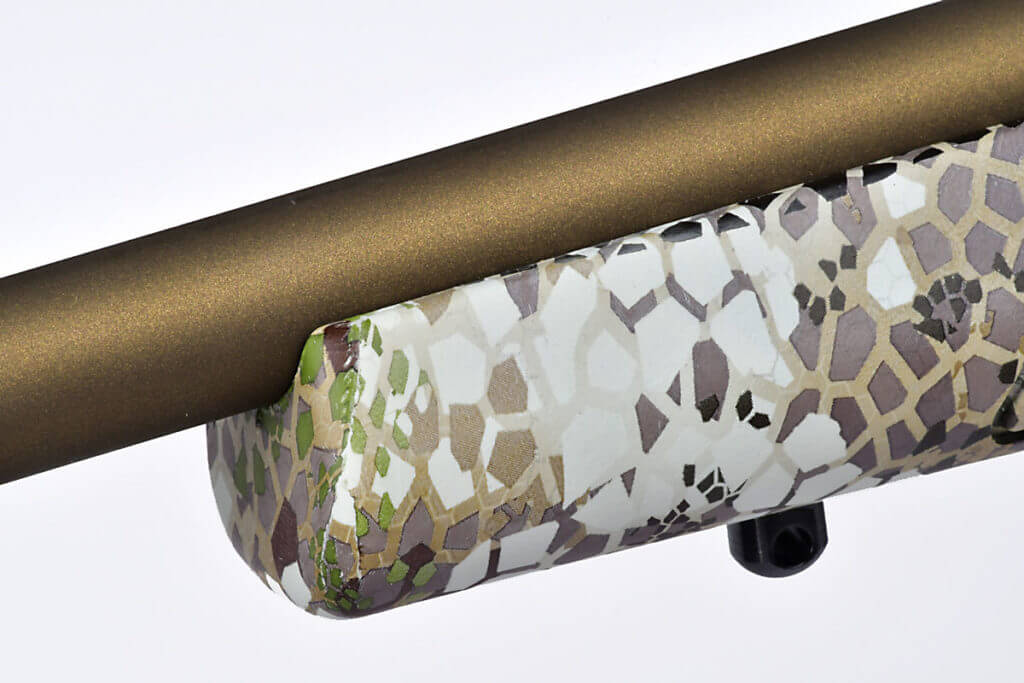
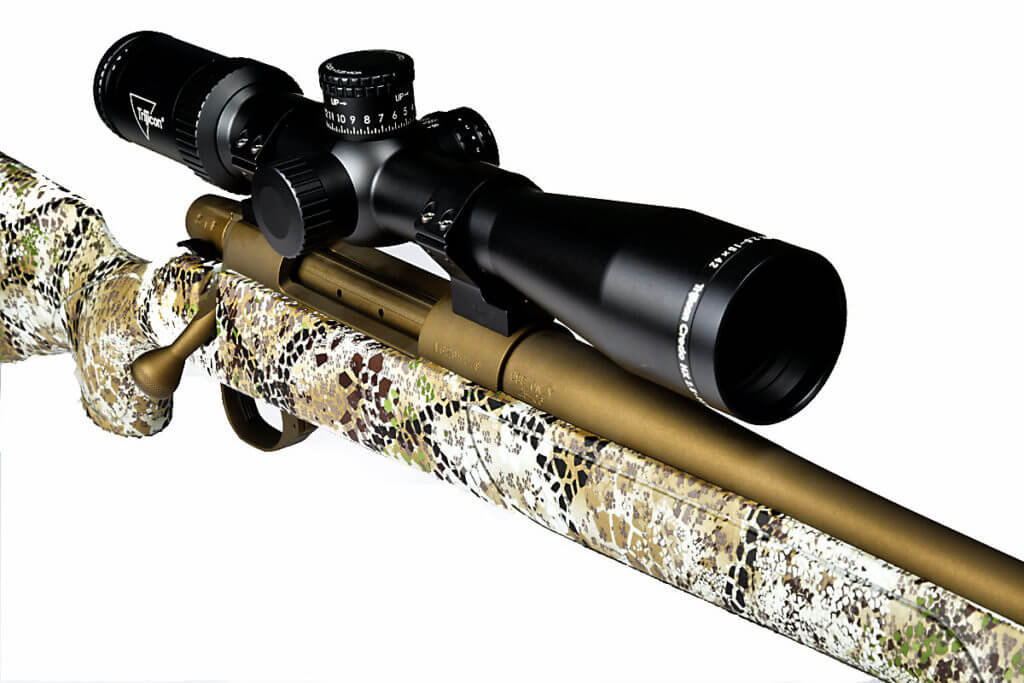
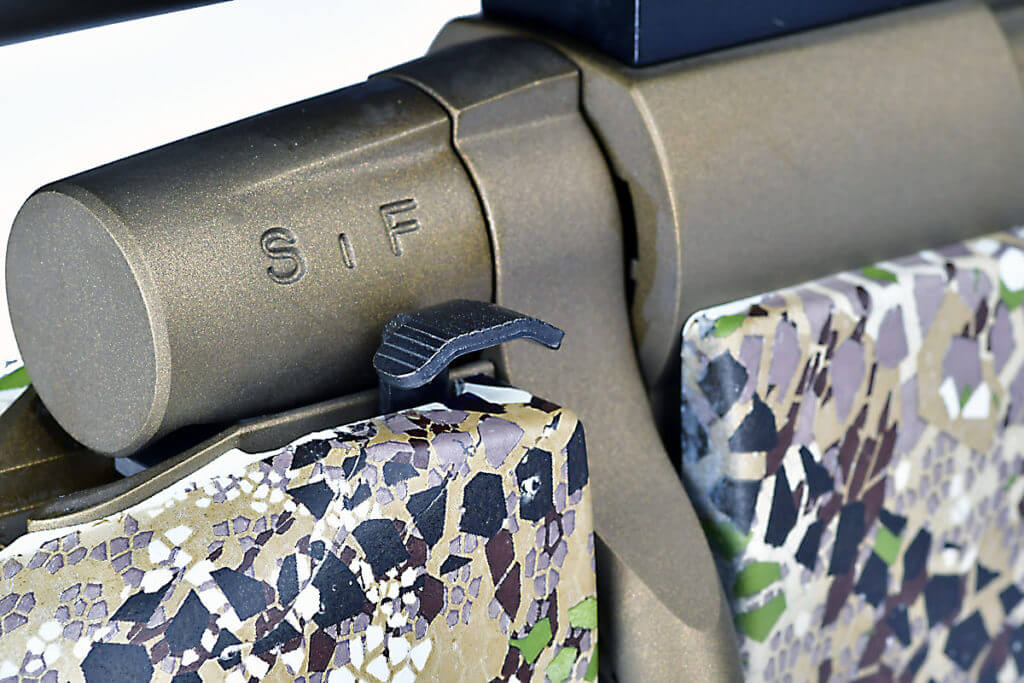
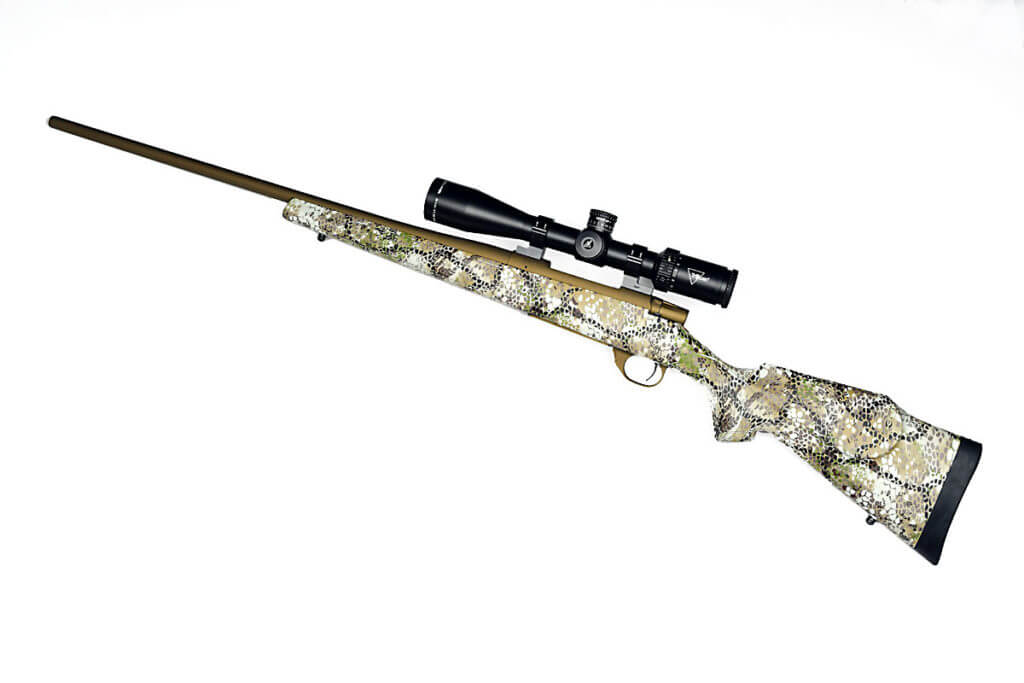
For more information visit Weatherby website.
Buy and Sell on GunsAmerica!


I would agree, that the Vanguards are great rifles. They are based on the Howa 1500 action, which is also a very good, underrated rifle. The Weatherby that I own is a Mark V Deluxe, in .300 Wby. Mag., but a cousin owns the Vanguard version, a Sporter in .300 Wby. also. We’ve shot each other’s rifles, and BOTH are absolute tack-drivers, pushing 1/2 MOA with the loads they prefer, and neither is picky about the ones they don’t like, still 1 to 1.5 MOA at the worst! I would not hesitate to buy the Vanguard, or the Howa 1500. I’m REALLY trying to justify one of the Badlands Vanguards in the not too distant future… that is one well thought out combination of features, especially in wet, rough weather with the Ceracoat finish!
Great review, thanks!
Perhaps mention should be made that this excellent rifle is also available as a HOWA 1500 model…..I have the one with a bull-barrel in .308 and can say it is a very under-rated and under-appreciated gun. The design and materials of construction is first-rate…and maybe more importantly so is the quality of manufacture. More people should look into the virtues of this gun….it has many of the features and design elements of the expensive Finnish-made SAKO guns…..and is a real alternative to the too-often-seen and mentioned Rem 700.